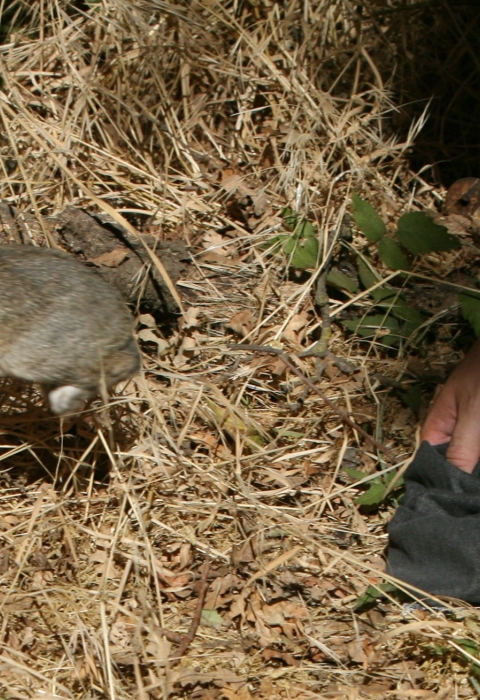On May 20, 2022, wildlife veterinarians at California Department of Fish and Wildlife (CDFW) were notified that an endangered riparian riparian
Definition of riparian habitat or riparian areas.
Learn more about riparian brush rabbit, found deceased in the San Joaquin River National Wildlife Refuge, tested positive for rabbit hemorrhagic disease virus 2 (RHDV2), a highly transmissible and frequently fatal disease of rabbits. The disease has spread rapidly across the western United States.
“This is a discovery we hoped would never occur, but it’s one we’ve planned for by implementing a proactive vaccination effort,” said CDFW Senior Wildlife Veterinarian, Dr. Deana Clifford. “We are in the very early stages of understanding the impacts to the species now that RHDV2 has arrived at the refuge.”
Since August 2020, a multi-partner team has been vaccinating wild riparian brush rabbits to protect a portion of the population at the San Joaquin River National Wildlife Refuge and adjacent habitat. The team — U.S. Fish and Wildlife Service, CDFW, the Oakland Zoo, River Partners, California State University, Stanislaus, California Department of Food and Agriculture, and the UC Davis California Animal Health and Food Safety Lab — has undertaken an ambitious program that has safely administered theFilavac RHDV2 vaccine to 638 individual rabbits.
“This will be the true test of the effectiveness of our vaccination efforts, which are part of a larger conservation effort to restore habitat and recover the population of riparian brush rabbits,” said the Service’s San Luis National Wildlife Refuge Complex Manager Kim Forrest.
RHDV2 was first observed in wild rabbits in the southwestern United States in March 2020 and has rapidly spread to many states. In California, cases of the virus in wild rabbits have been detected in Alameda, Kern, Los Angeles, Orange, Riverside, San Bernardino, San Benito and San Diego counties. Cases in domestic rabbits have also been confirmed in Fresno, Sonoma, Ventura and San Louis Obispo counties. RHDV2 is not related to the novel coronavirus and does not affect humans or domestic animals other than rabbits.
Riparian brush rabbits are found in small patches of remaining riparian forest habitat in the northern portion of the San Joaquin Valley and the Sacramento-San Joaquin Delta. Because vaccinations require trapping and administering injections to each individual rabbit, it is not feasible to deploy vaccinations for wild rabbit populations except in cases where populations are small and endangered. CDFW has received reports that live rabbits are still observed in areas where the virus has been confirmed, giving biologists hope that some rabbits are surviving infection.
While the impact of RHDV2 on the endangered riparian brush rabbit is not yet known, biologists are closely monitoring rabbits using camera surveys and testing to determine if additional cases occur at the refuge or adjacent habitat.
“The vaccine has been shown to be highly effective against the virus in domestic rabbits, and our hope is that over time some of the riparian brush rabbits will have immunity and survive,” said Clifford.
The public can assist by reporting any sick or dead wild rabbits to CDFW, as wildlife veterinarians continue to monitor the situation. Anyone who lives, works or recreates in wild rabbit habitat can report sightings of sick or dead rabbits to CDFW’s Wildlife Health Laboratory at (916) 358-2790, or file an online mortality report through CDFW’s website.
CDFW’s RHDV2 webpage includes fact sheets and information about the virus, how to report sightings of dead rabbits, strategies for preventing human-caused spread of the disease, a link to CDFA resources for domestic rabbit owners, and a U.S. Department of Agriculture interactive map showing counties where the disease has been confirmed in domestic, feral and/or wild rabbits.
Media Contact:
Ken Paglia, CDFW Communications, (916) 825-7120\
Jackie D’Almeida, U.S. Fish and Wildlife Service, (916) 207-8385


